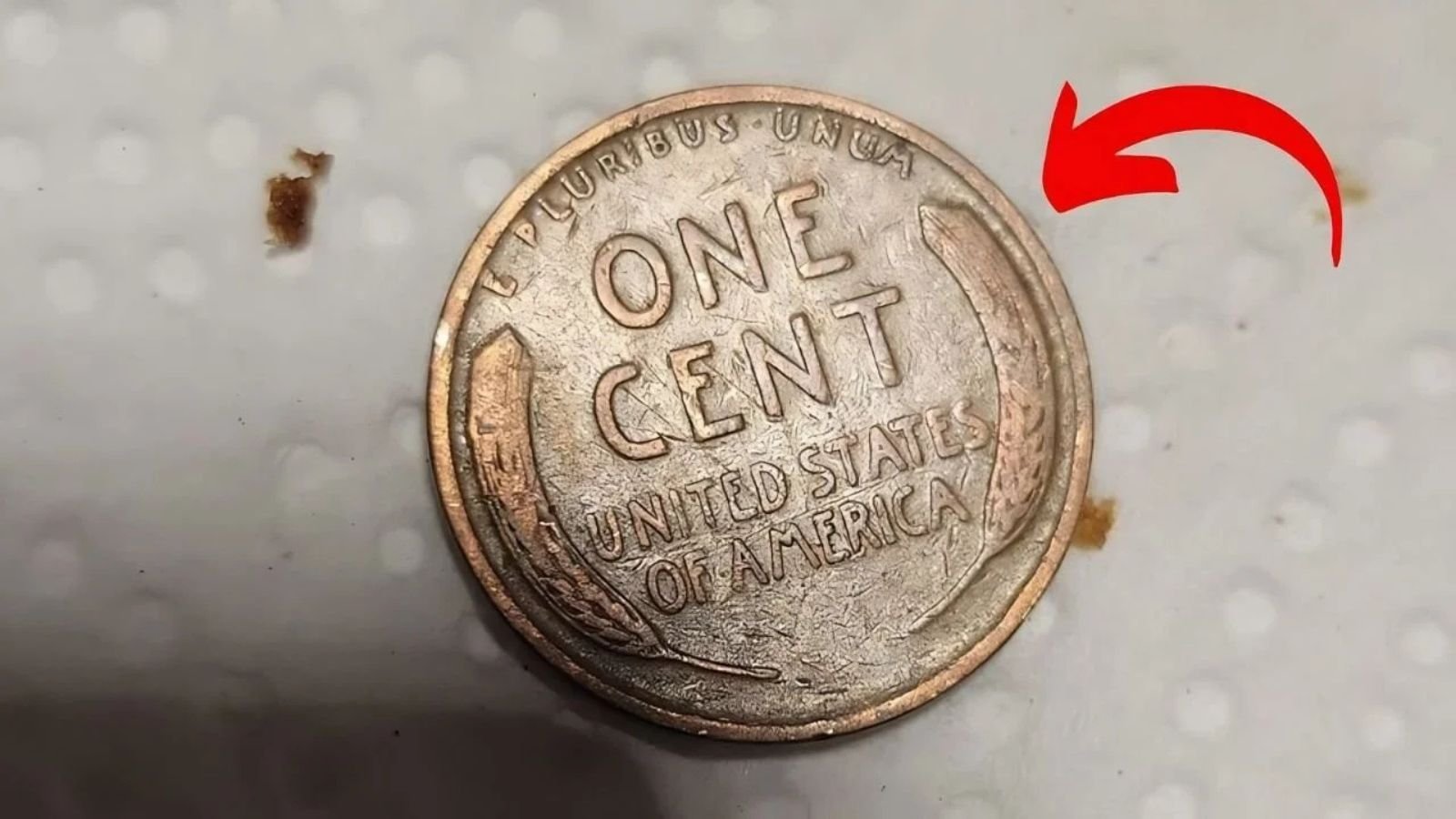Have you ever found an old coin lying around your house, maybe tucked away in a drawer or buried deep in your wallet, and wondered if it could be valuable? Most of us don’t give a second thought to spare change—but imagine discovering that one of those pennies is actually worth more than ₹100 crore (around $13 million). That’s the case with a special version of the Lincoln Wheat Penny—specifically, the incredibly rare 1943 copper variant. It may look like ordinary pocket change, but this small, brown coin holds a massive secret: it’s one of the rarest and most sought-after collectibles in American numismatic history.
A Coin Born from Wartime Confusion
To understand how the 1943 copper Lincoln Wheat Penny became a millionaire-maker, we have to travel back to one of the most intense periods in modern history—World War II. In 1943, with the United States fully engaged in the war, copper became a strategic resource needed to manufacture weapons, ammunition, and essential military equipment. To preserve copper for the war effort, the U.S. Mint made a drastic decision: pennies would no longer be struck from copper but from zinc-coated steel.
As a result, nearly all of the pennies minted in 1943 were made of this silver-colored steel. But here’s where it gets interesting—some copper planchets from 1942 were mistakenly left in the minting machines. These blank copper discs were inadvertently struck with the 1943 design and released into circulation. Only a small number of these errors occurred—possibly as few as 20 coins in total—and that’s what makes the 1943 copper Lincoln Wheat Penny so staggeringly rare and valuable.
The Coin No One Was Supposed to Have
Think about it: a coin that wasn’t supposed to exist somehow made its way into the hands of everyday Americans. The copper 1943 Lincoln Wheat Penny was never officially approved or planned. It happened purely by mistake, a fluke in the minting process. But this “accidental” coin ended up being one of the most iconic and valuable coins ever created. Today, collectors across the globe dream of owning one.
When one of these pennies is in excellent condition—especially if it’s been carefully preserved over the years—it can fetch jaw-dropping prices. One of the finest examples ever discovered reportedly sold for a staggering $13 million, making it one of the most valuable coins in the entire world.
Why Is It Worth So Much?
So why exactly is the 1943 copper Lincoln Wheat Penny valued in the crores? Three key factors make it incredibly desirable:
- Extreme Rarity: Only a handful of these pennies exist. Some estimates suggest there are fewer than 20 authentic pieces, making them almost impossible to find.
- Historical Significance: The coin was minted during a time of global turmoil. Its accidental creation during WWII ties it deeply to American history.
- Condition and Authentication: The better preserved a coin is, the higher its value. If a copper 1943 Lincoln Wheat Penny is in pristine or uncirculated condition and verified by a professional grading service, it can command millions.
This trifecta of rarity, historical context, and collector demand is what sends the value of this humble penny soaring into the stratosphere.
How to Tell If You’ve Found the Rare Penny
Now here’s the question every coin enthusiast—and probably everyone reading this—is asking: “How do I know if I have one?”
If you come across a Lincoln Wheat Penny with the year 1943 stamped on the front (just below Abraham Lincoln’s profile), it might be worth taking a closer look. But don’t get your hopes up too fast—most 1943 pennies are made of steel and look silver, not copper.
Here’s a basic checklist to help you identify a potential jackpot:
- Check the Date: It should clearly read “1943.”
- Check the Color: Steel pennies look silver-gray. The rare copper versions have a reddish-brown hue.
- Try the Magnet Test: Steel is magnetic. Copper isn’t. If your 1943 penny sticks to a magnet, it’s not the rare one.
- Listen to the Sound: When dropped, steel coins have a sharper “clink,” while copper has a duller, heavier sound.
Even if your penny passes all these tests, don’t assume it’s genuine just yet. Counterfeits are common.
Watch Out for Fakes and Altered Coins
Because the 1943 copper Lincoln Wheat Penny is so valuable, it’s become a popular target for counterfeiters. Some scammers take regular steel 1943 pennies and coat them with copper to give the illusion of rarity. Others go as far as modifying the dates on other copper coins—like reshaping a 1948 penny to resemble a 1943 one.
These tricks can fool even a keen eye, which is why you should never buy or sell a potentially rare coin without professional evaluation. Always go through a trusted grading and authentication service like the Professional Coin Grading Service (PCGS) or the Numismatic Guaranty Corporation (NGC). They’ll use precise tools to measure the metal content, check the weight, and examine mint details under magnification.
Unexpected Places Where These Coins Have Been Found
Believe it or not, these multimillion-dollar coins haven’t always been discovered in museums or high-end collections. Some have turned up in the most ordinary places:
- A young boy once found one in his lunch money.
- A man inherited one from a relative’s old coin jar.
- Others were discovered in rolls of pennies purchased from banks.
The most amazing part? People still find valuable coins like the 1943 copper Lincoln Wheat Penny today. The odds are slim, but they’re not zero. You never know what might be hiding in your loose change.
Other Valuable Lincoln Pennies to Look Out For
While the 1943 copper penny is the most famous, there are several other Lincoln Wheat Penny editions worth thousands—or even tens of thousands—of dollars. Here are a few examples:
- 1909-S VDB Penny: The first year the Lincoln cent was minted. Only a small batch from the San Francisco Mint included the designer’s initials (V.D.B.). Worth over ₹83 lakh (approx. $100,000).
- 1914-D Penny: Rare because of its limited mintage. Can fetch ₹40–60 lakh in good condition.
- 1922 “No D” Penny: Denver Mint coins without a visible mint mark. Highly sought after by collectors.
- 1955 Double Die Penny: Letters and numbers appear doubled due to a minting error. Some examples are valued at over ₹40 lakh ($50,000).
- 1944 Steel Penny: The reverse mistake of the 1943 copper coin—a steel penny made in a year when copper was back in use. Also highly valuable.
So while you’re on the lookout for the copper 1943 Lincoln Wheat Penny, keep an eye out for these treasures too.
What to Do If You Think You’ve Found One
If you suspect you’ve discovered a rare Lincoln cent, follow these steps:
- Do Not Clean the Coin: Cleaning can damage the surface and drastically reduce its value.
- Store It Properly: Use a soft cloth or protective coin holder to avoid scratches.
- Contact a Professional Grader: Services like PCGS or NGC can confirm authenticity and assign a grade.
- Explore Sale Options: Rare coins can be sold through auction houses, coin dealers, or private collectors. Always get multiple offers and consult experts before selling.
Why People Still Chase the Penny Dream
So why does the Lincoln Wheat Penny still captivate the imagination of collectors and everyday folks alike? It’s more than just the money—though the financial reward is massive. It’s the excitement, the idea that something as small and overlooked as a penny could hide untold value. It represents a modern-day treasure hunt. Every coin jar, every handful of change, every trip to the convenience store holds the possibility of discovery.
It brings people into the world of history, economics, craftsmanship, and even science—all wrapped in a 1-cent piece of metal.
Final Thoughts
In today’s world of digital transactions, mobile wallets, and cryptocurrency, it’s almost unbelievable to think that a penny—a small, copper-colored coin—could be worth millions. But that’s the beauty of the Lincoln Wheat Penny, especially the rare 1943 copper version. Its worth lies not just in its monetary value but in the stories it carries, the history it represents, and the dreams it continues to inspire.
So next time you hear that familiar clink of change hitting the bottom of your pocket or purse, pause for a second. Take a closer look. That unassuming little coin might not just be spare change—it could be a life-changing fortune in disguise.
Some Important Link
| Telegram Group | Click Here |
| WhatsApp Group | Click Here |
| Home Page | Click Here |















